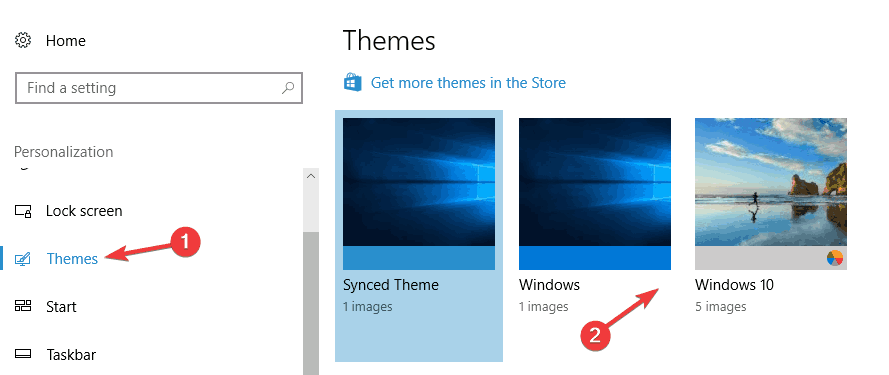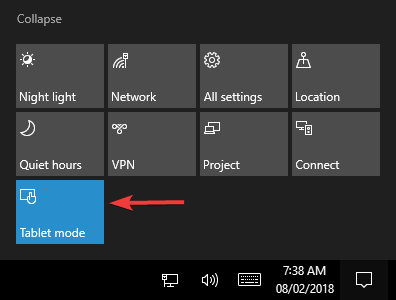Minimize Maximize Close Buttons Missing Windows 10
Every once in a while for a variety of reasons, it’s possible for a window to get positioned such that its title bar – the bar across the top of the window with the program name as well as the Minimize, Maximize, and Restore buttons – is off the screen, becoming both impossible to see and impossible to click on using the mouse.
Almost as common are windows that are completely off screen – perhaps due to unplugging a second monitor before moving all windows back to the remaining screen.
If you’re used to using the controls on a window’s title bar to move, manipulate, or otherwise deal with the application, you’re kind of out of luck.
In Windows 8.1 Update 1, Microsoft made some changes to make the OS friendlier for keyboard/mouse users. Modern apps now have a title bar. You can make that titlebar visible by moving your mouse pointer to the top edge of the screen. We also showed you how to make the title bar show using a.
At least if you’re using a mouse.
- Dec 15, 2015 Windows 10 Close, Minimize and Maximize buttons. This code works fine but painted button looks like from Windows 7 theme, even on Windows 8 or 10. This is possible to paint the Close button using Windows 10 or 8 theme? Winapi windows-themes. Share improve this question.
- Re: How to fix missing window buttons (close, maximize, minimize) in windows 10? Yeah but I cant fix the title and buttons of windows apps missing, only windows apps. Hope you can help sir. Thankyou for your time.
It might be time to break out the keyboard interface.
The title bar
For our example, I’ll fire up Notepad. Here’s what I’m referring to when I talk about the title bar:

In addition to the title, the title bar also includes the System Menu on the far left, as well as the familiar Minimize, Maximize, and Close icons on the right.
System Menu? Yes, the application icon that appears on the far left is something you can click on:
As you can see, there are the Minimize, Maximize, and Close items, as well as a couple of others: Restore (inactive since the window is in the “restored” state – neither minimize nor maximized), as well as Move and Size.
This will come in handy in just a moment.
Getting at the system menu
If any portion of the application window is visible at all, you can simply click on it and then typeALT+spacebar (hold down ALT while typing the spacebar once and then release both). Somewhere on your screen, you’ll get the
system menu for the application.
Alternately, right-click on the application in the task bar (in Windows 7 & 8 you may have to hold down the Shift key as you click):
Moving the window back
Click on the Move menu item. The mouse cursor changes to the “move” cursor:
Now … let go of the mouse.
The next step uses the keyboard.
Press any arrow key. Somewhere on the screen, you’re likely to see a partial outline of a window border. Ignore it.
Now wiggle the mouse.
What you’re seeing is an outline of the window you’re moving. Use the mouse to move it where you will, click, and the window is placed there.
Windows keyboard interface
It’s helpful to remember that Windows (and any well-designed Windows application) does not actually always require a mouse. There is generally supposed to be a way to do everything using just your keyboard1. Yes, many things are more difficult with a keyboard, but nonetheless they should still be possible. It’s worth being familiar with the basic keyboard interface for situations such as this or for that day when your mouse finally gives up the ghost.

ALT+spacebar is the key to basic window operations. As we saw from there, you can not only minimize, maximize, and restore your window, but you can also move and resize it. To move (which only works if your window is visible and not maximized), hit ALT+spacebar, type M for move, and then use the arrow keys to move the window all around. Press Enter when done. You can move your window almost completely off the screen this way. To resize your window (again, only if your window is visible and not maximized), hit ALT+spacebar, type s for size, hit an arrow key that points to the edge of the window that you want to move, and then use that arrow key and its opposite to move that edge of the window.
Most people realize that CTRL+ESC is equivalent to pressing the Start menu. But most people don’t realize that the Start menu and task bar have a keyboard interface as well. Try this: press CTRL+ESC to bring up the Start menu – now press ESC again to make it go away. The task bar is left with focus (meaning that keystrokes go to it). Depending on your layout and version of Windows, various sequences of Tab and arrow keys can move you through all of the elements of the task bar. When you finally highlight something you want to activate, the Enter key usually does the trick.
In fact, along the way, tabbing through the task bar eventually makes your desktop become active. Arrow around through the various icons on the desktop and type Enter to activate one.
Here’s another handy keyboard shortcut: CTRL+SHIFT+F10 is often the same as right clicking. While you’re arrowing around those desktop icons or the notification area
The notification area is also sometimes referred to as the “tray”, because tray was the name of a similar feature in older versions of Windows.
(Click on the term for full definition.)
If you’re interested in learning more about keyboard shortcuts, select Help and Support on the Windows Start menu and search for keyboard shortcuts for a good summary of all thing things you can do without your mouse.
Ubuntu 12.10 32 bits, fresh installation.
How can I make Unity maximize or minimize a window?
I see no button,option, anything, do I miss something big? Quick googling did not give me a piece of answer, too:
On first screen, I have a terminal window. Only clue about maximizing it I found was pressing F11 which made it fullscreen, hiding left bar as well. I would prefer it to take whole free space instead of whole screen. How can I do that?
On second screen, I have an opera browser which takes bigger part of the screen but I can't make it take whole screen. Restarting opera did not work.
How do I minimize/maximize apps? Also, in case I would like to see the desktop, only solution I found was closing everything
Help guys. I kind of like new GUI, but I can't have simplest tasks done there, I feel like I miss something big there.
jokerdino♦4 Answers
Seems like you have a problem with the window manager.
Did you change any of the settings of Compiz? used compizconfig?
First, try the following command from the terminal (ctrl+alt+t): metacity --replace &.Do you now have a bar at the top of the windows?
The next thing is to try to load compiz window manager again (3D windows manager): compiz --replace &.
If after the second command you don't have a bar again, i suggest you to reset compiz settings. you can try unity --reset
in compizconfig manager try to enable window decoration.
It seems you can press F11 to toggle full screen on most apps. Also, you can move your mouse to the top of the screen, where a menu for that app will appear. Choose View > Full Screen.
Windows 10 Minimize Maximize Buttons
Update
Opera is weird: it does not show the menu, but if you click on the 'Opera' icon at the top left corner, it will drop down a menu, choose 'Show Menu Bar' and you have more control. I found that if I turn on show the menu bar, then turn off, the window will go to full screen.
Hai VuHai VuMinimize Maximize Close Buttons Missing Windows 10 Free
I've found a dirty solution for that.
When I press F4, it switches my display configuration, I believe most laptops work the same way, so, here is the solution:
after you push F4 about 6 times, until your main display (laptop) and your secondary display are appearing (for the second time), you'll be able to see the buttons in the Windows taskbar.
Jens Erat